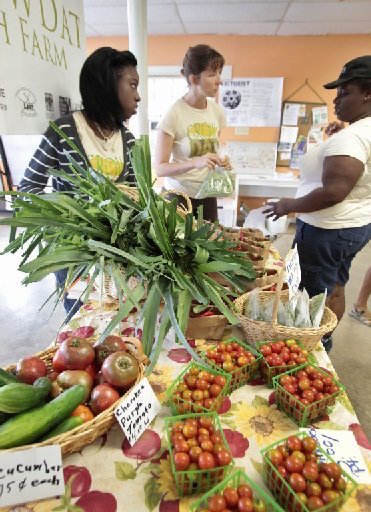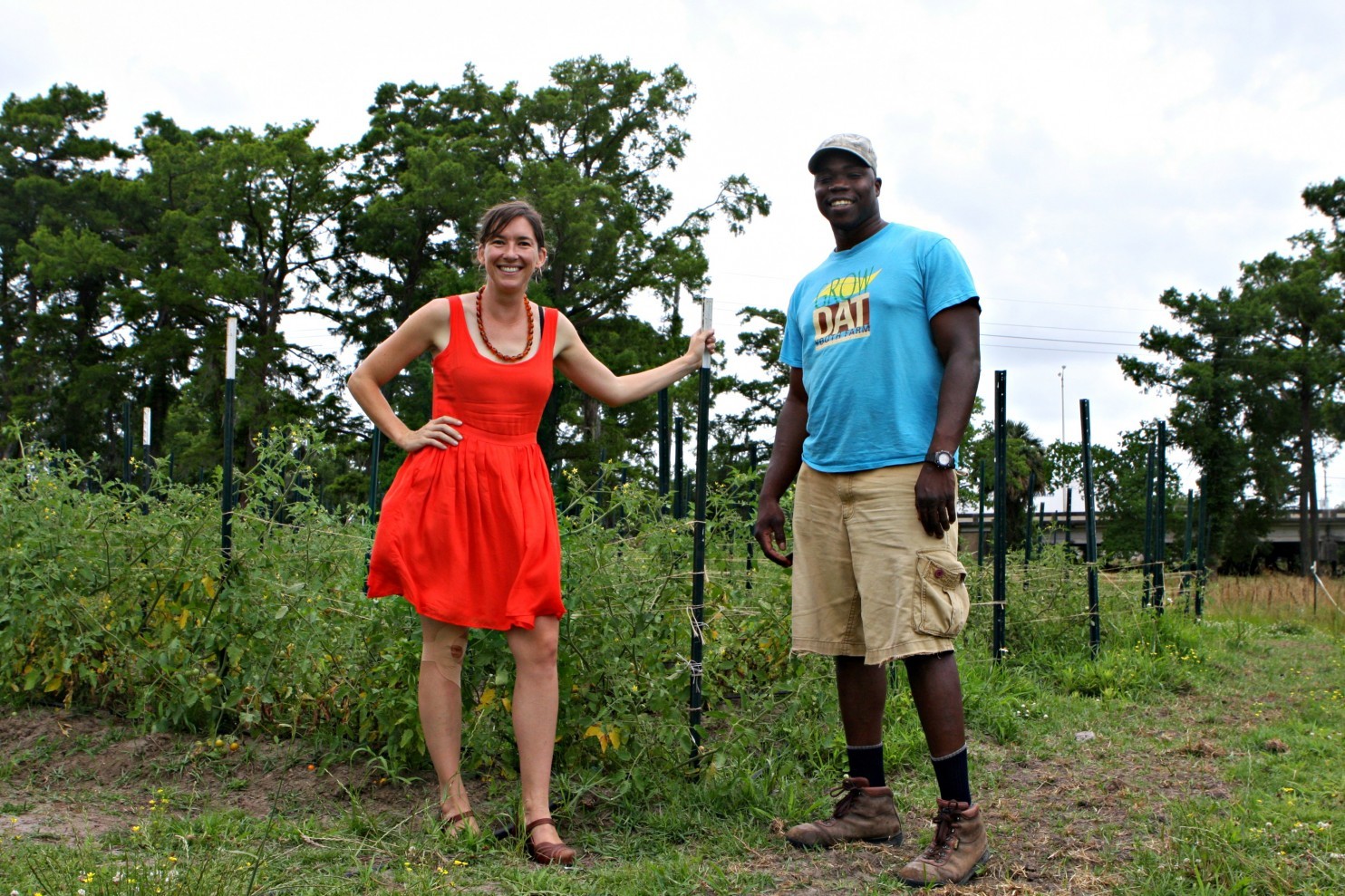“Rough” and “unhealthy” are the words Tim Dubuclet uses to describe his childhood. Raised in inner-city New Orleans, he and his friends would wander the city’s violent streets after school, living on a diet of fast food and soda. By the time he was 17, Dubuclet weighed more than 300 pounds.
But he dramatically transformed his lifestyle during a program with Grow Dat Youth Farm, where students are paid to grow fresh produce. There, he started focusing on his diet. He spent two days each week working in the garden, growing and weeding the radishes, chard and other vegetables he had never heard of before. He felt empowered cooking these new healthful foods, and lost 80 pounds.
“At the farm, people came to talk to us about health, opening our eyes to the dangers of things like sugary drinks,” said Dubuclet, now 20. “I started eating healthier, growing my own food. I realized there was so much more to life than what I was doing with myself.”
In 2013, Grow Dat found most of its incoming students living unwholesome lifestyles, with only 12 percent who reported eating vegetables in the previous 24 hours. Some, like Dubuclet, came from poor neighborhoods, or areas where residents lived more than three miles from a supermarket.
The lack of access to fresh produce has long been a problem for many residents in a city obsessed with food, and was exacerbated in 2005 by Hurricane Katrina, which left much of New Orleans underwater. According to one study, in 2008, there were nearly 18,000 residents per supermarket — far more than the national average of 8,800 residents per supermarket. But, with federal funding and nonprofit programs that came to the city after Katrina, some viewed the city’s recovery as an opportunity to improve access to healthful food.
Dwayne Boudreaux fought for eight years to reopen his Circle Food Store after Katrina decimated the 7th Ward grocery with five feet of water. An iconic photograph circulated after the hurricane shows stranded residents wading outside the 1930s-era building, chest-deep in water. Some feared the store, badly damaged, would never return to the area.
Walking along the aisles of the renovated store, which opened earlier this year, Boudreaux explained that he had long striven to make healthful food accessible to residents. A 2010 study found that 64 percent of New Orleanians were obese.
 “We have things we never even sold before the hurricane,” Boudreaux said, smelling the leafy dill delivered that morning and gesturing to assortments of organic juices.
“We have things we never even sold before the hurricane,” Boudreaux said, smelling the leafy dill delivered that morning and gesturing to assortments of organic juices.
The area’s lack of fresh food was more than just inconvenient. It often meant the difference between eating produce and not, as nearly 42 percent of the 7th Ward’s population lives in poverty, and more than one in three families get by without a car. The neighborhood lost nearly 40 percent of its population after Katrina, according to city data.
Circle Food’s rehabilitation was funded in part by New Orleans’s Fresh Food Retailers Initiative, a $14 million project launched in 2011 to increase access to produce in the city’s most underserved neighborhoods.
Officials hope the initiative will be a catalyst for revitalization, said Aimee Quirk, economic development adviser to Mayor Mitch Landrieu (D).
“New Orleans is one of the nation’s fastest-growing cities,” Quirk explained. “Even before the hurricane, much of the city was underserved in terms of fresh food. Yet fresh food is critical to attracting new residents.”
In June, city officials announced a new grocery store opening in Central City and a Whole Foods Market opened in the Mid-City neighborhood in February. That store is part of the ReFresh Project, an experimental initiative that links the store to programs that teach residents to cook produce available at Whole Foods, and how to manage health problems such as diabetes through nutrition. Opening on the site in July, the Goldring Center for Culinary Medicine at Tulane University will serve as a first-of-its kind teaching kitchen for community members, medical students and medical professionals.
“It speaks to the idea that food is the best medicine,” said Jeffrey Schwartz, founder of the neighborhood organization behind the project, Broad Community Connections.
The notion is so promising that a nonprofit created by Whole Foods will study the initiative and whether it can be replicated in other places, said Meredith Smith, executive director of the Whole Cities Foundation.
“Katrina really created this situation where people said, ‘You know, we have to pull together, to rely on each other,’ ” Smith said. “There’s this real spirit of collective action.”
Johanna Gilligan, founder of Grow Dat Youth Farm, agrees.
“After the storm, there was just this moment of, ‘How do we re-imagine a city?’ because what we knew was forever changed,” she said. “So much didn’t come back.”
Since it began in 2011, Gilligan’s farm has increased from 11 student workers to 41. This year, students are growing more than 10,000 pounds of food on the seven-acre site in City Park. Of that, 40 percent is donated to students’ families and other residents who need it.
“Inner-city kids don’t have anything to do with farming or healthy eating — just football and McDonald’s,” Dubuclet said. “I didn’t know anything about vegetables before I farmed.”
Now, he not only knows all the steps of growing plants, but he cooks, too. Dubuclet thinks these programs can help transform communities like his — pointing to the fact that he now gardens and prepares food with his family.
“My grandmother is getting older, and working in the garden has helped me to get closer to her,” he said. “Really, farming has made me the person I am today.”
Source: WashingtonPost
